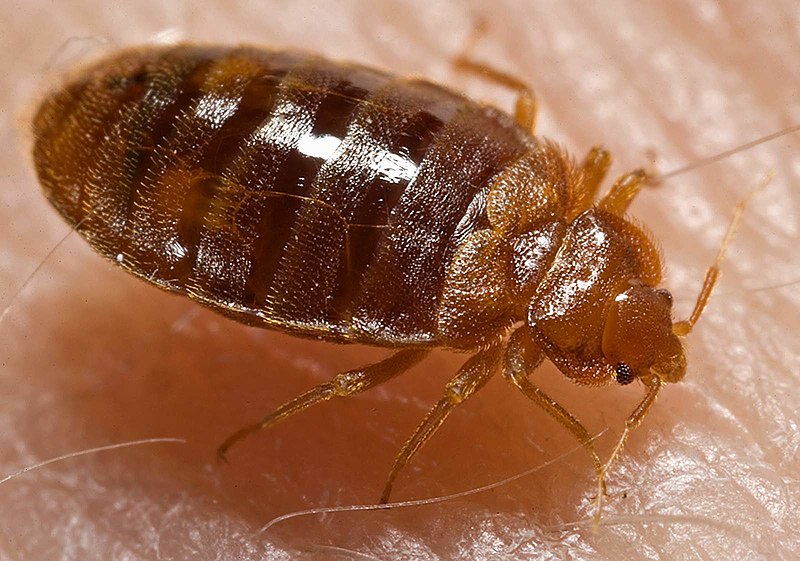Ficheiro:Bed bug, Cimex lectularius.jpg

Dimensões desta antevisão: 800 × 561 píxeis. Outras resoluções: 320 × 224 píxeis | 640 × 449 píxeis | 1 024 × 718 píxeis | 1 280 × 898 píxeis | 1 600 × 1 122 píxeis.
Imagem numa resolução maior (1 600 × 1 122 píxeis, tamanho: 161 kB, tipo MIME: image/jpeg)
Histórico do ficheiro
Clique uma data e hora para ver o ficheiro tal como ele se encontrava nessa altura.
| Data e hora | Miniatura | Dimensões | Utilizador | Comentário | |
|---|---|---|---|---|---|
| atual | 14h11min de 17 de maio de 2007 |  | 1 600 × 1 122 (161 kB) | Patho | == Summary == {{Information |Description=ID#: 9822 Description: This 2006 photograph depicted an oblique-dorsal view of a '''bed bug nymph, Cimex lectularius''', as it was in the process of ingesting a blood meal from the arm of a “voluntary” human h |
Utilização local do ficheiro
As seguintes 3 páginas usam este ficheiro:
Utilização global do ficheiro
As seguintes wikis usam este ficheiro:
- af.wikipedia.org
- an.wikipedia.org
- ar.wikipedia.org
- ary.wikipedia.org
- arz.wikipedia.org
- ast.wikipedia.org
- as.wikipedia.org
- azb.wikipedia.org
- az.wikipedia.org
- be.wikipedia.org
- bg.wikipedia.org
- bjn.wikipedia.org
- bn.wikipedia.org
- bs.wikipedia.org
- ca.wikipedia.org
- ca.wikiquote.org
- ca.wiktionary.org
- ceb.wikipedia.org
- cs.wikipedia.org
- cv.wikipedia.org
- dag.wikipedia.org
- de.wikibooks.org
- din.wikipedia.org
- el.wikipedia.org
- eml.wikipedia.org
- en.wikipedia.org
- en.wikinews.org
- en.wiktionary.org
Ver mais utilizações globais deste ficheiro.
